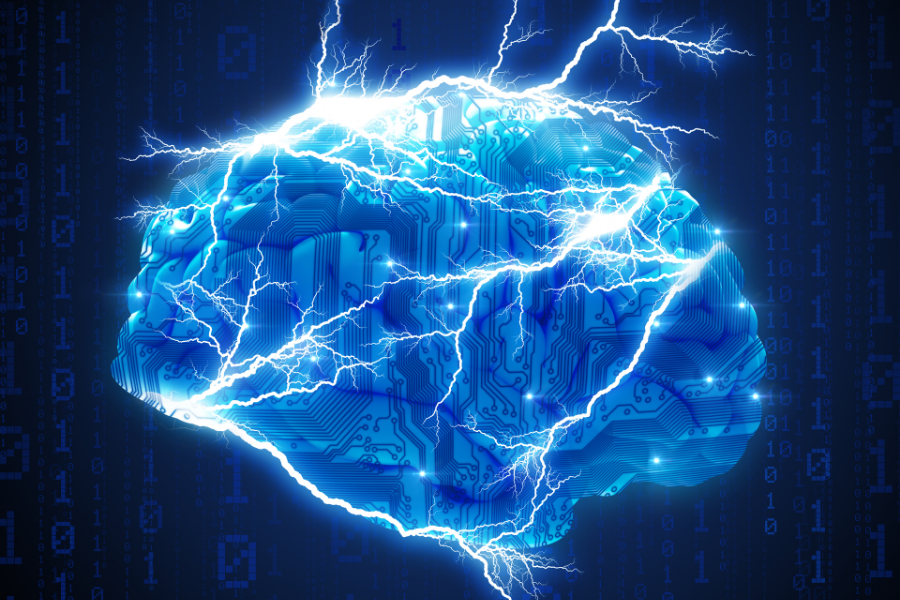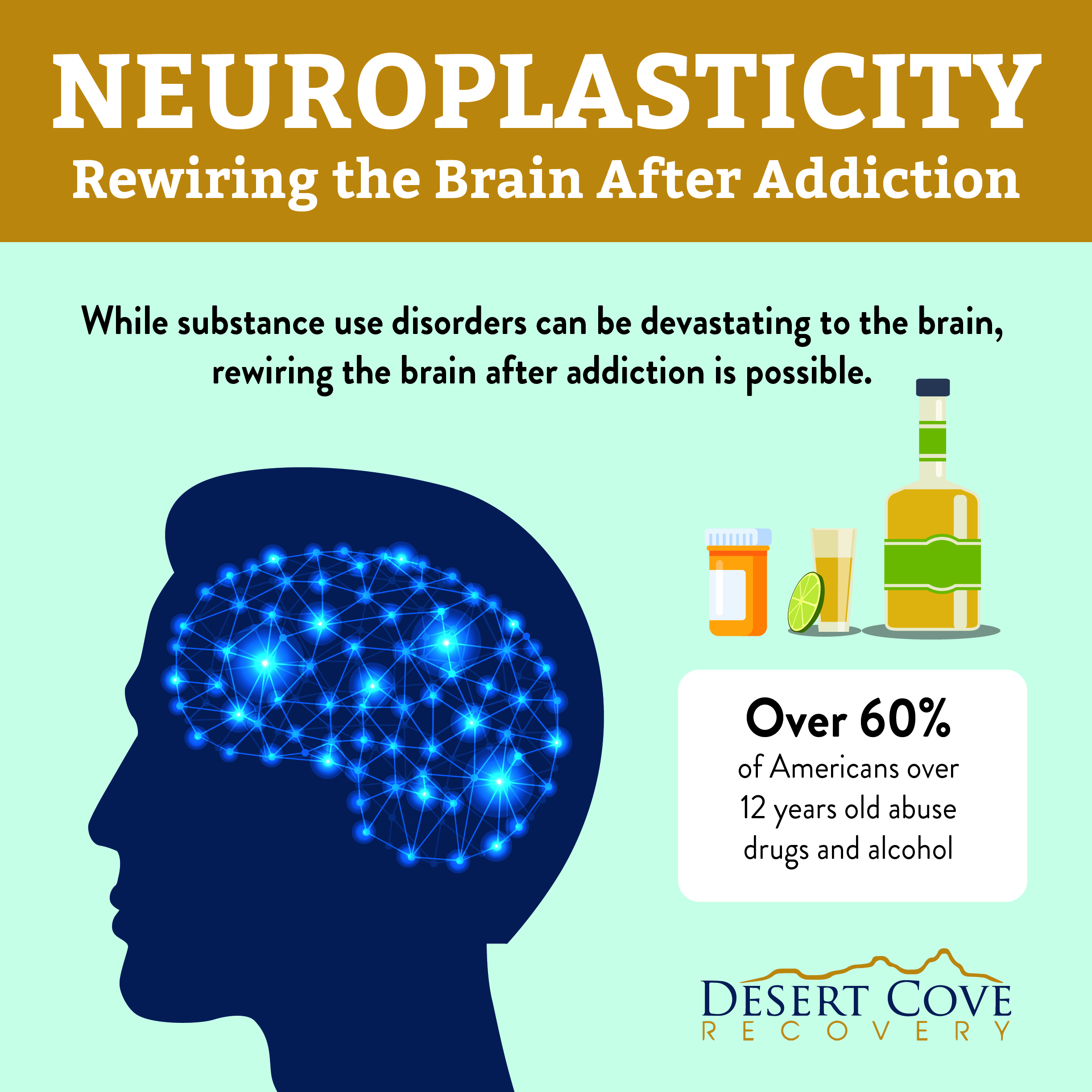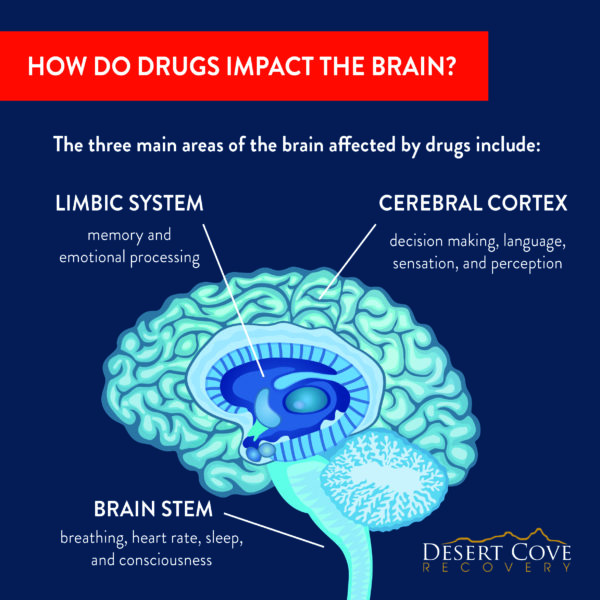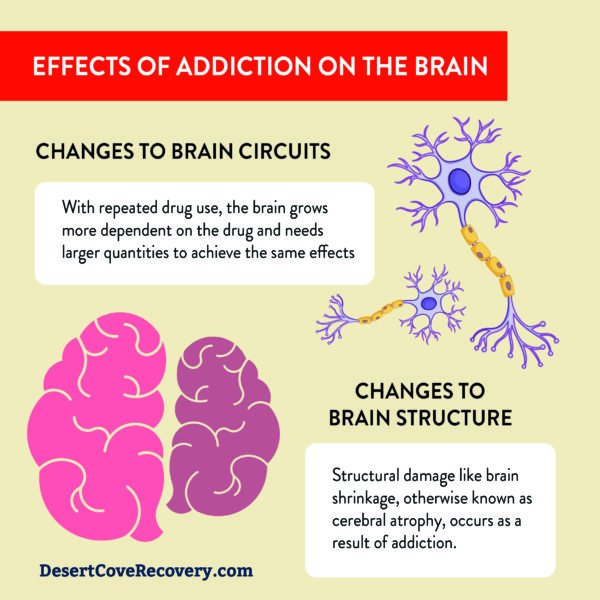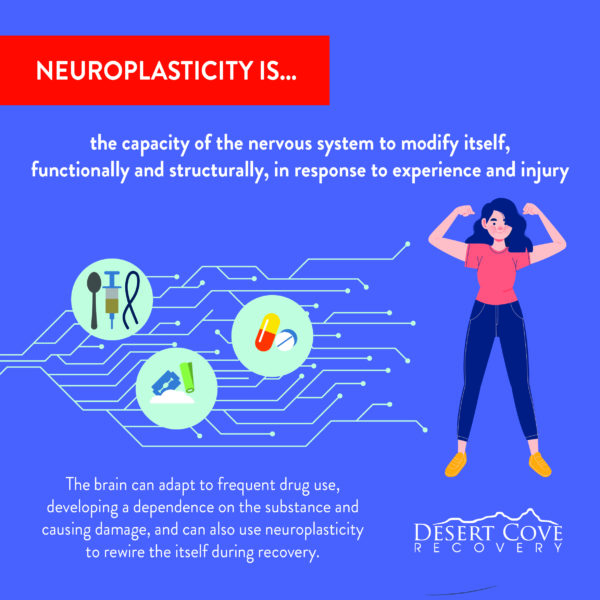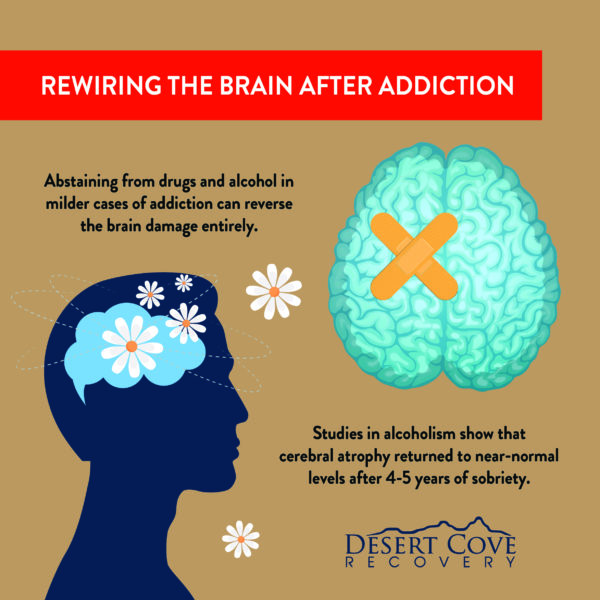While substance use disorders can be devastating to the brain, rewiring the brain after addiction is possible.
The brain is undoubtedly the most complex organ in the body. It is responsible for countless functions like controlling memories, thoughts, vision, movement, emotions, facial recognition, and so much more. For this reason, protecting your brain health for the ability to function and experience life is critical.
But with over 60% of Americans over 12 years old abusing drugs and alcohol,1 millions of individuals are at risk of the adverse effects of prolonged drug and alcohol use on the brain. Learn how drugs affect and change the brain, what neuroplasticity is and how the brain can be rewired even after addiction.
How Do Drugs Impact The Brain?
When an individual uses alcohol, cocaine, meth, and other substances, it impacts how neurotransmitters work in the brain. Whether it’s mimicking a neurotransmitter or releasing large amounts of the natural neurotransmitter, drugs and alcohol are responsible for shifting the chemicals in the brain.
The three main areas of the brain affected by drugs include: 2
- The brainstem: the brainstem plays a major role in the automatic functions of the body, such as breathing, heart rate, sleep, and consciousness
- The limbic system: the limbic system connects to memory and emotional processing.
- The cerebral cortex is the outermost layer of the brain responsible for higher functions like decision making, language, sensation, and perception.
Effects Of Addiction On The Brain
Here are a few of the long-term effects of addiction on the brain that can be a cause for concern:
Changes To Brain Circuits
Drug and alcohol use provokes short-term feelings of pleasure, euphoria, joy, and relaxation. But with repeated use, the brain grows more and more dependent on these feelings and needs larger quantities to achieve the same effects. While intoxicated or craving a drug, the brain’s circuits associated with reward, motivation, memory, and cognitive control become activated, in turn making users lose control over their ability to refrain from drugs.3
Changes To Brain Structure
One of the structural damages that occur in addiction is brain shrinkage, otherwise known as cerebral atrophy. Cerebral atrophy is when someone begins to lose some of the neurons and connections in their brain, shrinking the brain’s size. This can be caused by various brain diseases like Alzheimer’s, Huntington’s disease, long-term drug, and alcohol use.
In one study that looked at alcohol users, it was found that those who had four or more drinks a day were at a 6x higher risk for hippocampal shrinkage in the brain than nondrinkers.4 This is the part of the brain that is responsible for memory, reasoning, and learning. Another study found that 62.5% of chronic opioid abusers had cerebral atrophy, and 10% of that number had severe cases with ventricular enlargement.5
What Is Neuroplasticity and Why Does It Matter With Addiction?
The term neuroplasticity is defined as the “capacity of the nervous system to modify itself, functionally and structurally, in response to experience and injury.”6 Simply put, neuroplasticity explains that the brain is a malleable organ that can change in structure and function for the better or worse. This means that when individuals struggle with addiction, neuroplasticity works both to their detriment and to their advantage.
Neuroplasticity explains how the brain can change and adapt to frequent drug use, developing a dependence on the substance and causing damage. But it also means that when someone chooses to abstain from drugs and alcohol after recovering from addiction, the brain can use neuroplasticity to rewire the brain more beneficially.
Rewiring The Brain After Addiction
Numerous studies reveal the ways that rewiring the brain after addiction is possible. Abstaining from drugs and alcohol in milder cases of addiction can reverse the brain damage entirely. Specific studies on alcoholism recovery found that cerebral atrophy returned to near-normal levels in 4-5 years of sobriety. Afterward, improvements in memory, learning, and problem-solving were documented.7
One study of a group of meth users found more reasons for hope. It revealed that long-term sobriety boosted the brain’s DA functionality and reversed some brain harm from meth use.8
Recovery Is Possible At Desert Cove Recovery
The first step to rewiring the brain after a drug or alcohol addiction is beginning your journey towards sobriety. Your best bet for a successful outcome is to enroll in a rehab center. There, trained professionals provide services like drug detox, individual or group therapy, and relapse prevention training.
For the best rehab center in Scottsdale, Arizona, look no further than to Desert Cove Recovery. We welcome you to learn more about our programs by speaking with our team today.
Sources:
[1] https://drugabusestatistics.org/
[2] https://teens.drugabuse.gov/drug-facts/brain-and-addiction#topic-2
[3] https://www.ncbi.nlm.nih.gov/pmc/articles/PMC155054/
[4] https://www.health.harvard.edu/blog/this-is-your-brain-on-alcohol-2017071412000
[5] https://www.ncbi.nlm.nih.gov/pmc/articles/PMC7297242/
[6] https://pubmed.ncbi.nlm.nih.gov/29080018/
[7] https://pubs.niaaa.nih.gov/publications/10report/chap02e.pdf
[8] https://pubmed.ncbi.nlm.nih.gov/11717374/

